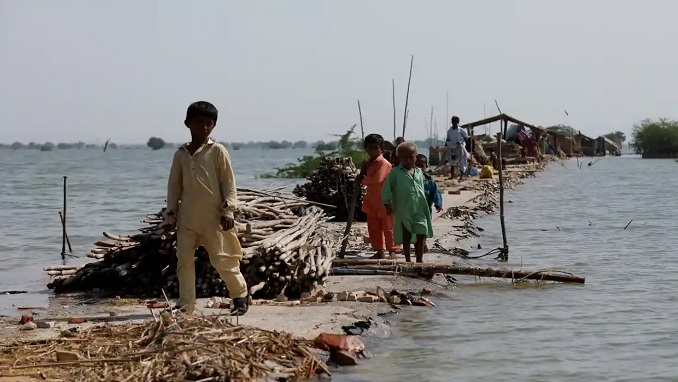
Up to 4 million children in Pakistan are still living near contaminated and stagnant flood waters, risking their survival and well-being more than four months after a national state of emergency was declared after monsoon rains washed away their villages, the United Nations Children’s Fund (UNICEF) warned on Monday.
According to UNICEF, children living near potentially life-threatening flood waters are facing skyrocketing rates of water-borne diseases and acute respiratory infections – a leading cause of child mortality worldwide- exacerbated by the presence of contaminated and stagnant pools of water.
About 1.5 million children are still in need of lifesaving nutrition interventions, the agency warned adding that, in the meantime, the number of children suffering from severe acute malnutrition in flood-affected Pakistani regions from July to December nearly doubled compared to the same period the year before.
According to UNICEF, 60,000 of 800,000 children they’ve screened for malnutrition were identified as suffering from secretly acute cases – life-threatening conditions in which children are too thin for their height – and referred for treatment with “ready-to-use therapeutic food” – an energy-dense micronutrient paste made of peanuts, sugar, milk powder, oil, and vitamins.
Abdullah Fadil, the UNICEF representative in Pakistan, said in a statement that the lives of nearly 10 million Pakistani children living in flood-affected areas have been pushed to the brink by diseases, infections, and severe acute malnutrition coupled with the cold.
Pakistani prime minister, Muhammad Shehbaz Sharif, noted in an op-ed for The Guardian on Friday that the summer floods in Pakistan claimed 1,700 lives and brought apocalyptic conditions to 33 million people leaving under water a territory the size of Switzerland with more than 2 million homes.
Many families in the southern region of Jacobabad, as UNICEF reported, have little more than cloth to protect their makeshift floodwaters, facing temperatures that regularly plunge to 7 degrees Celsius at night, and even snowfall and freezing temperatures in the mountainous and high-altitude areas, which were also affected by the summer floods that also destroyed 14.000 km of roads and 23,000 schools and clinics.

Be the first to comment